19 Corporate Employee Wellness Ideas to Boost Workplace Health and Happiness
Looking for ways to build a thriving workplace? Discover 19 corporate employee wellness ideas that promote health, happiness, and retention. Transform your culture with smart wellness initiatives today.
On this page
Employee wellness is no longer just a nice-to-have — it’s a critical part of building resilient, productive workplaces. Today’s employees expect more than a paycheck; they want organizations that genuinely care about their physical, mental, and financial well-being.
A strong focus on wellness leads to higher engagement, better retention, and a thriving workplace culture. Organizations that adopt holistic well-being initiatives experience significant improvements in employee satisfaction, loyalty, and overall performance.
In this blog, we’re sharing 19 employee wellness ideas you can incorporate in the workplace to help you build a healthier, happier workforce. Whether you're searching for creative corporate wellness ideas, such as on-site fitness classes, or meaningful financial perks like tax-saving benefits and early wage access, these strategies are designed to meet employees where they are — and help them thrive.
Let’s explore actionable ways to elevate your workplace wellness strategy.
Why is employee wellness important?
Employee wellness is significantly beneficial for both the organization and the employee. Employees who are happy and healthy are more productive and can perform to their full potential.
It significantly improves an organization's retention rate, as it positively impacts employee morale, fosters better teamwork, enhances job satisfaction, and cultivates a sense of community in the workplace. These programs also promote healthy habits, helping employees prevent and manage chronic diseases.
While these wellness initiatives can transform employee health and happiness, executing and managing them at scale can be a significant challenge. That’s where Empuls steps in. Empuls simplifies employee wellness management by offering a centralized platform that automates stipend distribution, personalizes wellness perks, tracks engagement, and celebrates achievements.
Whether it's offering fitness reimbursements, running mental health campaigns, or organizing wellness challenges, Empuls ensures your programs are seamless, scalable, and impactful.
19 Employee wellness ideas you can incorporate in the workplace
To create a healthy and thriving workforce, employee wellness is imperative. You can organise various activities, ranging from healthy indoor and outdoor activities to philanthropic ones.
So, for employees and employers to reap the benefits of such programs, here are the top 15 employee wellness program ideas you can easily implement
1. On-site fitness classes
Employees with desk jobs must sit for long hours in the office with barely any time to move around or exercise. Such work is not only strenuous but also leads to various chronic health complications that can be negative in the long run.
That's why one significant and effective employee wellness program idea is to provide on-site gym services or fitness classes. By offering a variety of fitness classes during the workday, employees can not only stay fit but also avoid the monotony of desk jobs.

2. Gym membership discounts
The option for gym membership discounts acts as a great alternative for on-site fitness classes. You can partner with local gyms to provide discounted memberships for employees. Membership discounts significantly increase employees' motivation to engage in physical activities for their health benefits.
Employees can regularly use this membership and use the gym to stay fit. Moreover, this option provides employees with the flexibility to choose their gym location. You can also run effective employee discount programs to give other times of discounts.

3. Health screenings
A fit body and mind are the key to high productivity and help create a positive work environment. This is where help screening plays an important role. They are medical tests that help identify whether an employee may have any potential health risks.
Being one of the most empowering employee wellness ideas, it promotes awareness of a healthy lifestyle. Regularly arranging on-site health screenings can help identify any underlying health issues among your employees and provide them with the necessary resources to address them.
4. Wellness challenges
Wellness challenges are one of the effective employee wellness program ideas since it promote various activities to improve your employees' health. Some of the trending wellness challenges include the positivity challenge, drink more water challenge, mindful breathing sessions, maintaining a gratitude diary or meditation challenge.
It can also include starting a gratitude journal or joining on-site or virtual yoga classes. These challenges can initiate various healthy activities, creating a positive employee lifestyle. You can also incorporate ideas from your employees and complete a challenge that can be motivational and beneficial for them.
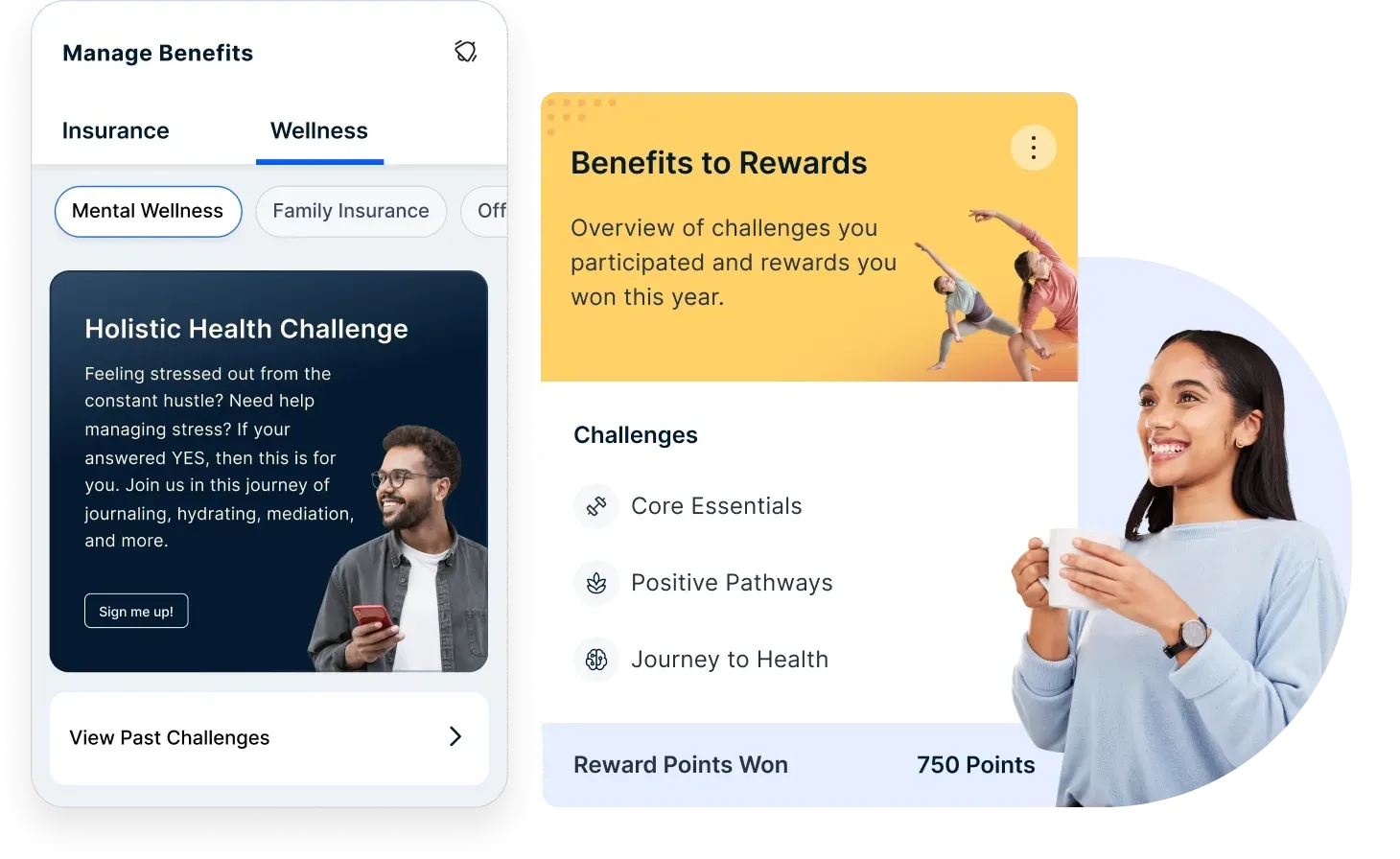
5. Mental health support
Mental health support is one of the most integral components of an effective employee wellness program. In the face-pace and competitive world, we often forget to take care of our mental and emotional well-being, which is equally important as our physical health. A healthy body and healthy mind can prove to be beneficial for employees as well as the organisation.
That's why starting an employee assistance program or providing access to counselling or therapy sessions for employees can be a significant step in the long run. It also provides employees with a safe space to discuss their issues, which has a positive impact on their productivity and mental health.
6. Nutrition education
Nutrients are critical in many functions of physical as well as mental health, and it directly impacts immunity in preventing diseases and combating infections. In the 21st century, unhealthy diets are rising, primarily due to the lack of time and knowledge. Its impact is directly associated with lower productivity, increased stress and various ailments.
You can offer workshops or classes on healthy eating and meal planning to bridge the knowledge gap. You can also provide employees with the necessary resources or create a nutrition challenge to motivate them towards a healthier lifestyle.
7. Provide early access to earned wages
Unexpected expenses can cause financial strain and anxiety for employees, affecting their performance and engagement at work. Offering early wage access solutions enables employees to withdraw a portion of their earned salary before payday, allowing them to manage emergencies or unplanned expenses without resorting to high-interest loans.
Platforms like Empuls integrate early wage access seamlessly, ensuring employees have the financial flexibility they need, contributing to reduced stress, higher loyalty, and improved financial well-being.
8. Stress management
Experiencing stress is a common and often unavoidable aspect of daily life. Managing stress is crucial for an employee to perform to their full potential. Due to this, stress management is one of the practical employee wellness program ideas.
You can provide resources and workshops on stress management techniques, and promoting mandatory self-care challenges or daily meditation can enhance proper stress management. Additionally, maintaining a work-life balance is crucial.
By providing your employees with the necessary support, you can help them manage stress.
9. Smoking cessation
Smoking has vast health implications and can lead to chronic respiratory conditions, heart diseases, diabetes, dental problems and even cancer. This habit is quite hard to break since Nicotine is an addictive drug and can lead to various withdrawal symptoms. As an employer, you can offer support and resources for employees who want to quit smoking.
You can establish a tobacco-free policy at the workplace or take this up further by launching a smoking cessation program where employees can access personalised tools to help them stop smoking.
10. Offer tax-saving benefits through flexible spending accounts
Managing finances can be stressful for employees, and finding ways to maximize take-home salary can greatly impact their financial wellness. Offering tax-saving benefits through flexible spending accounts, such as meal allowances, fuel reimbursements, telecom allowances, or books and periodicals wallets, helps employees reduce their taxable income and increase their disposable income.
Platforms like Empuls simplify the management of such flexible benefits, enabling companies to automate the distribution and ensure tax compliance, while giving employees the freedom to spend on what matters most to them.
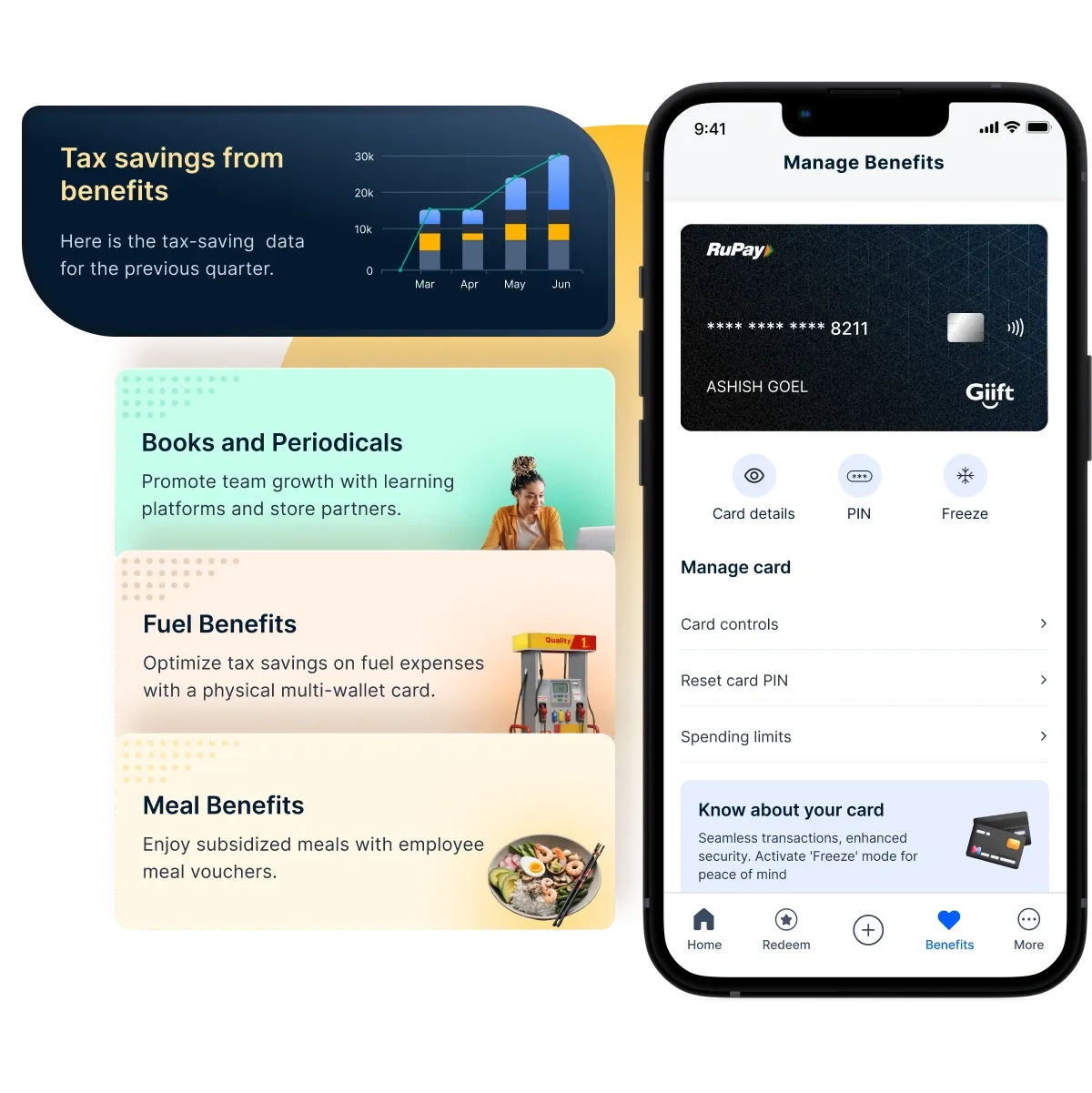
11. Work-life balance
Employee wellness is highly dependent on a good work-life balance. Such a balance enables employees to feel more in control of their working life, resulting in increased productivity, a less stressed workforce and fewer instances of sickness or absenteeism.
One of the most crucial employee wellness program ideas, you can encourage employees to prioritise their work-life balance by offering flexible schedules or remote work options. You can also significantly increase employee retention by prioritising work-life balance and providing them with the necessary tools or programs to balance their work and personal commitments.
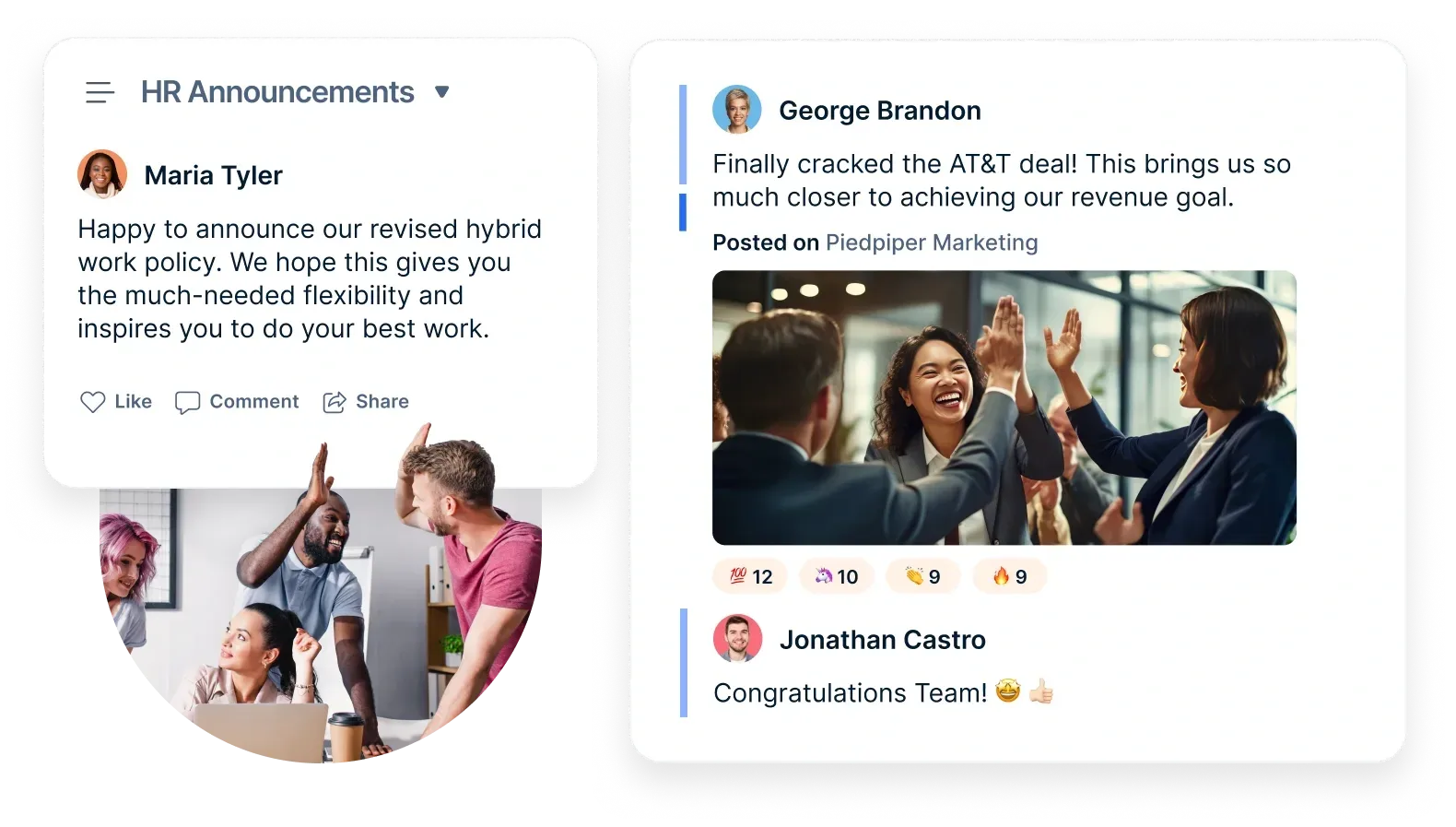
12. Employee assistance program
Employee assistance programs help cater to the employees' bodies and their minds. This is because, with such programs, employees can access confidential assistance for personal or work-related problems and get appropriate support for substance abuse, stress, depression and anxiety.
Employees could also improve their work relationships and performance, and manage occupational stress or major life events. This assistance program can have a profoundly positive impact on an employee's daily life, proving highly beneficial.
13. Yoga and meditation classes
Introducing yoga and meditation classes in a workplace falls under one of the best employee wellness program ideas. Yoga and meditation offer numerous health benefits. Not only does it help manage stress, but it also benefits weight loss, a healthier heart, high blood pressure, and body-wide inflammation.
You can help employees relax and reduce stress by offering yoga or meditation classes. It can also help your employees combat common diseases like asthma, arthritis, diabetes, liver problems, hypertensio,n or even lower back problems.
15. Volunteer opportunities
Motivate your employees to give back to the community by arranging volunteer opportunities. Helping others by doing good deeds usually makes many people good and fulfilled.
You can arrange community service activities like donation drives, collecting and donating pet food, assembling care packages, or hosting a charity team-building program. Curate an activity or program per your firm's size and the cause your employees feel passionate about.
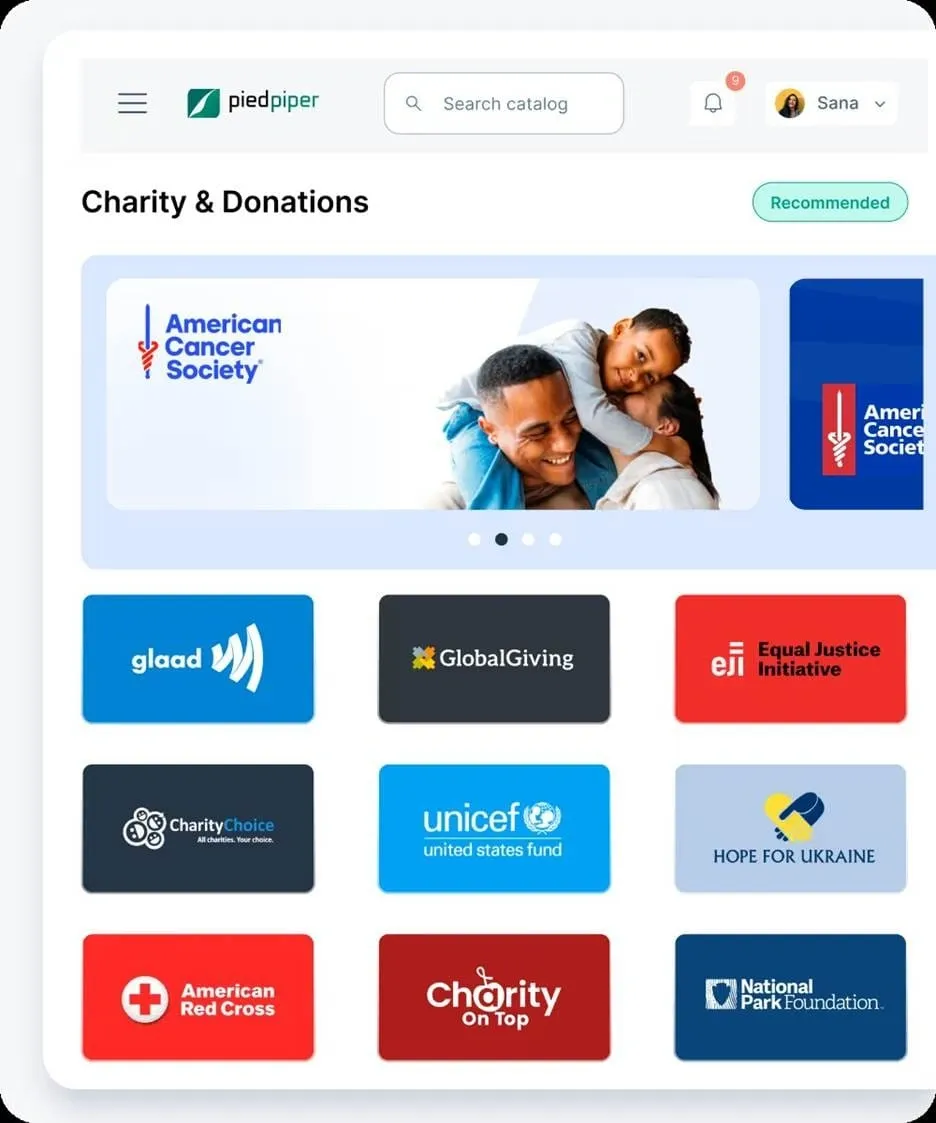
These programs also help elevate the bond among your employees and foster positive work relationships.
16. On-site massage
One of the out-of-the-box employee wellness program ideas consists of an on-site massage or a corporate chair massage. You can offer on-site massages to help employees relax and reduce stress. They are great for relaxing the body and mind, reducing muscle tension, alleviating muscular pain, and enhancing mood and overall well-being.
These factors can promote a happy workforce and reduce employee absenteeism. But by providing on-site massage, your employee can feel exceptional, think more clearly and be more productive. Therefore, this program idea can increase motivation and foster positive relationships in the workplace.
17. Launch an employee discount program
Providing access to exclusive employee discounts is a great way to promote financial wellness and improve overall employee satisfaction. Partner with top brands, wellness service providers, gyms, healthcare services, and retail stores to offer your employees meaningful discounts.
With Empuls, you can easily set up a global employee perks program offering thousands of discounts on fitness, travel, wellness, groceries, entertainment, and more — extending employee paychecks without the administrative hassle.
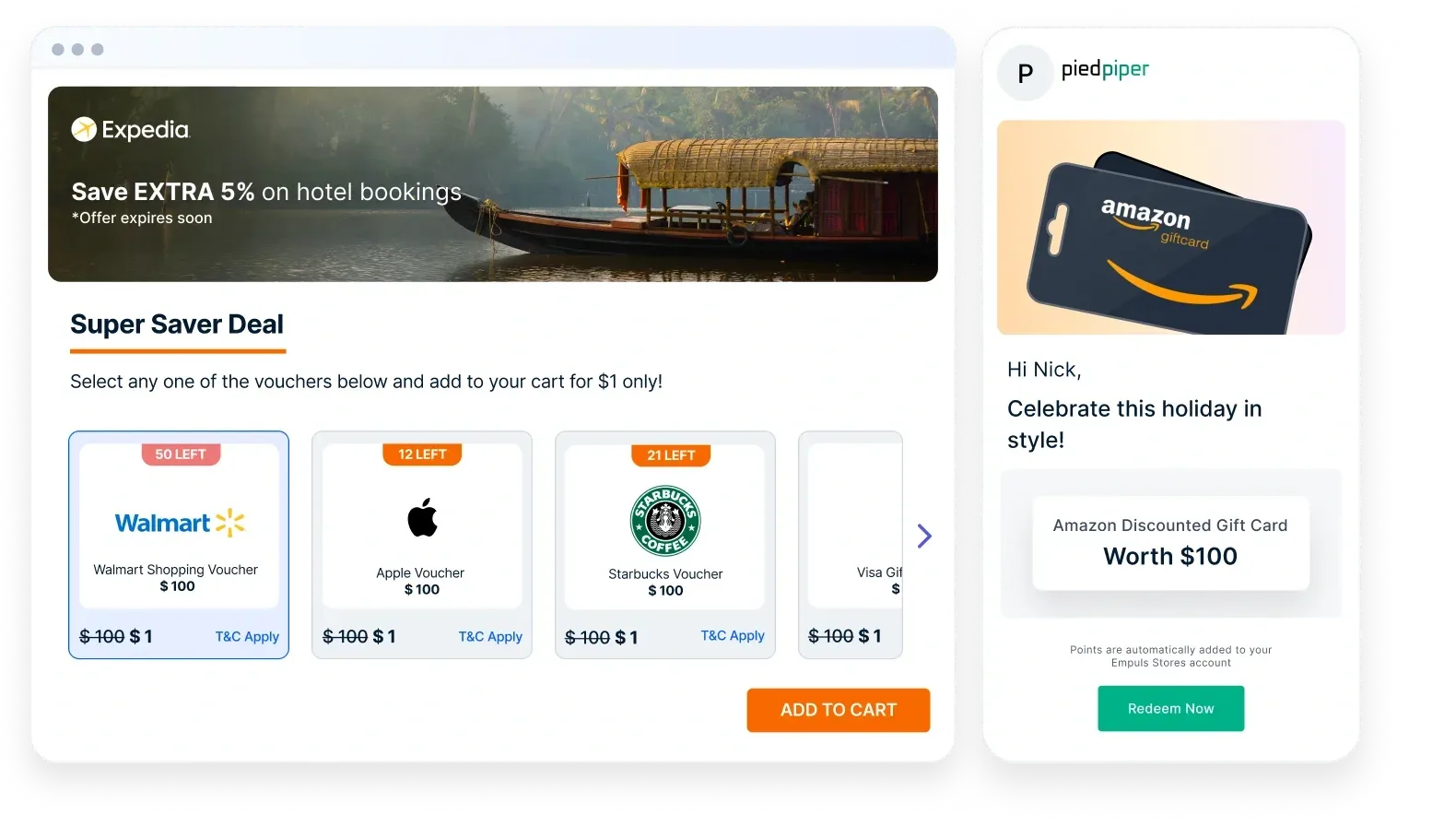
18. Health and wellness fairs
Health and wellness fairs help educate employees on health practices, related resources, and tools they can use to maintain their well-being. You can organise such fairs that provide information and resources on health and wellness topics.
As an employer, you can tailor this program to align with the areas of wellness that commonly impact your employees' performance in the workplace. This can increase knowledge of various health-related conditions, and you can also provide the relevant resources for employees, resulting in an inclusive approach.
19. Outdoor activities
One of the enjoyable employee wellness program ideas is organising outdoor activities. These include activities such as hiking or biking to promote physical activity and foster employee social interaction. You can also conduct cooking classes in the open, painting, yoga or meditation under the sky, team picnics, or other team-building activities.
You can select the activity with the most votes by completing a survey among your employees. This program can motivate your employees to participate and elevate teamwork.
Companies with excellent employee wellness programs to take inspiration from
Did you know that 9 in 10 organizations offer wellness incentives for their employees in 2024? This suggests that businesses without an employee wellness program are falling significantly behind the mainstream in maintaining a happy and healthy workforce. With this in mind, here are ten wellness programs to take inspiration from in 2024:
1. Nike’s wellness program
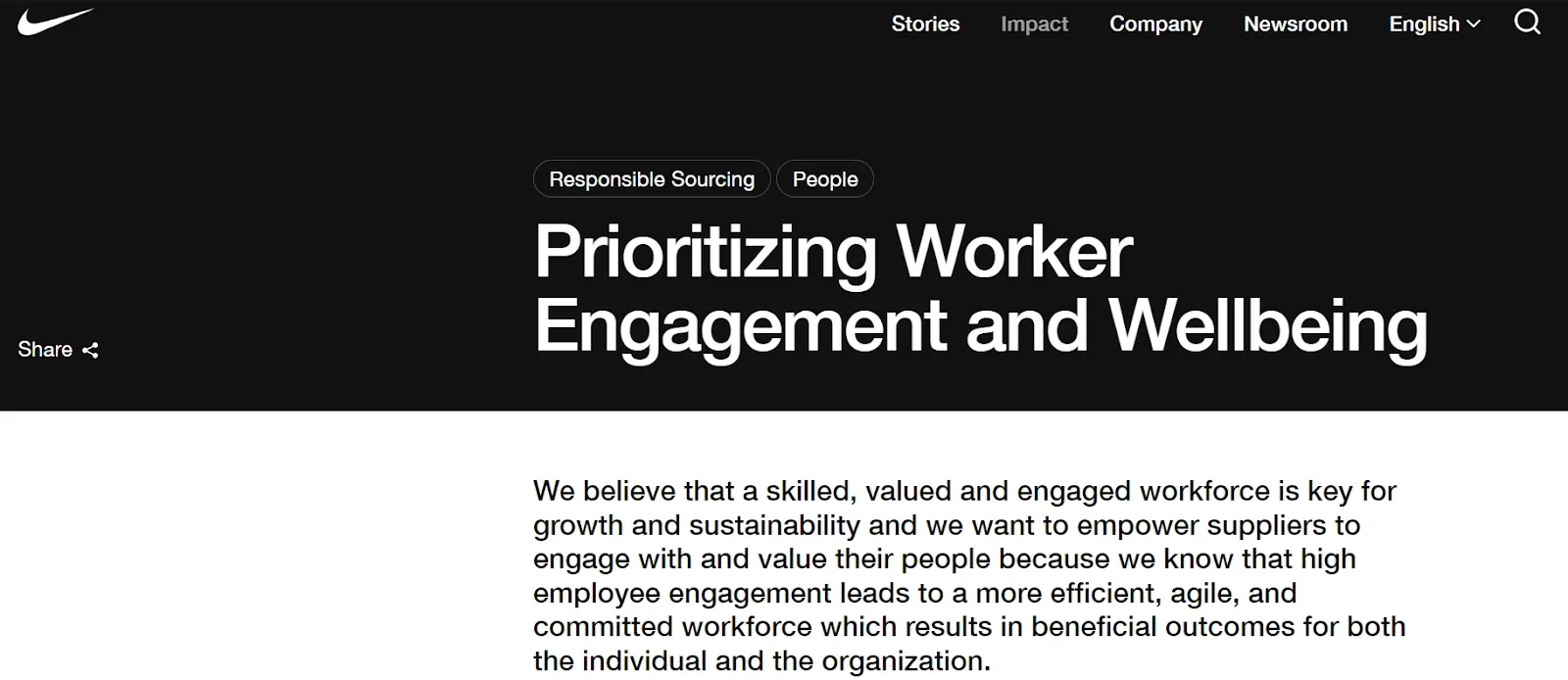
First up, we have Nike. the sportswear business is known for its innovative consumer campaigns, but recently, they have also introduced an impressive wellness program for their global set of employees.
Starting in their headquarters in Beaverton, Oregon, Nike now provides their in-house employees with a fitness zone called the Bo Jackson Center, which is full of gym equipment, rock climbing walls, an indoor basketball court, and an Olympic-sized swimming pool to encourage health and wellness during the work day.
Their aim is to engage their employees from all angles to create a more agile workforce going forward.
“We believe that a skilled, valued, and engaged workforce is key for growth and sustainability, and we want to empower suppliers to engage with and value their people because we know that high employee engagement leads to a more efficient, agile, and committed workforce, which results in beneficial outcomes for both the individual and the organization,” claims Nike in a recent press release.
While this is only the beginning, the company has since released an Engagement and Well-being (EWB) Survey to their factory workers to learn more about current engagement levels and any improvements that employees believe should be made to improve their working conditions.
2. The Iowa Clinic’s wellness program
The Iowa Clinic is another example of a wellness program that prioritizes the health of its employees directly.
Rather than creating a wellness center in their on-site locations, their strategy consists of offering healthcare and wellness gift cards to workers as incentives to perform well within the company.
Using the HR program Cooleaf, the healthcare company allows members to tap into recurring wellness programs and activity gift cards they can use in their local area.
Better still, the company also hosts a number of online webinars that educate employees on the importance of health screenings before offering them discounts for their next appointment within the clinic itself.
3. Expedia UK’s wellness program
Expedia’s creative approach to employee wellness also deserves a place on our list. Introducing a ‘wellness allowance’ to their UK employees, the business offers workers up to £1200 per year to send on fitness and fitness-related kit.
This gives employees the ability to choose activities that appear personally to them and enjoy them outside of work hours.
“One of the best Expedia Group benefits is the wellness reimbursement. I’ve been with the company for about five years, and I am appreciative of what it has done for me. I bought a new snowboard, lift passes, bicycle, paddle board, snowshoes, hiking gear, gym memberships, fitness classes, running registrations, and other workout-related things along the way,” says Quenita Dich, Salesforce System Administrator at Expedia.
“Since I’m such an active person, this perk helps provide me things that I can do that make me happy and healthy.”
4. Adobe’s wellness program

Adobe also puts employee wellness first with its myriad of wellness initiatives. These range from healthy lunch options to flexible working conditions and fitness centers on each office site around the globe.
Adobe also hosts whole company wellness days where employees free themselves of their work tasks for the day and engage in fun outdoor wellness workshops that build morale and promote teamwork inside and outside of the office.
5. Hotjar’s wellness program
Hotjar is a brilliant example of a brand incorporating employee wellness from home. As we embrace the WFH era, where 69% of employers now offer hybrid or fully remote contracts, maintaining employee wellness remotely is crucial for a productive workforce.
Hotjar now gives each employee $4000 to create their very own home office that contributes to not only their physical health but their mental health, too.
They also encourage every employee to participate in open mental health discussions in person and from home, and they offer extended leave to those struggling in the wake of the WFH adjustment.
“At Hotjar, mental health is health. We believe that eating well, exercising, and taking care of your mental health all fall into the same bucket: health,” says David Darmanin, Founder and Chairman of Hotjar.
“In fact, we actively encourage team members to talk about their own mental health—in team meetings or our company-wide mental health channel on Slack. And to take time off as a preventative measure and to get some relief—before their mental or physical health is suffering too greatly.”
6. Patagonia’s wellness program
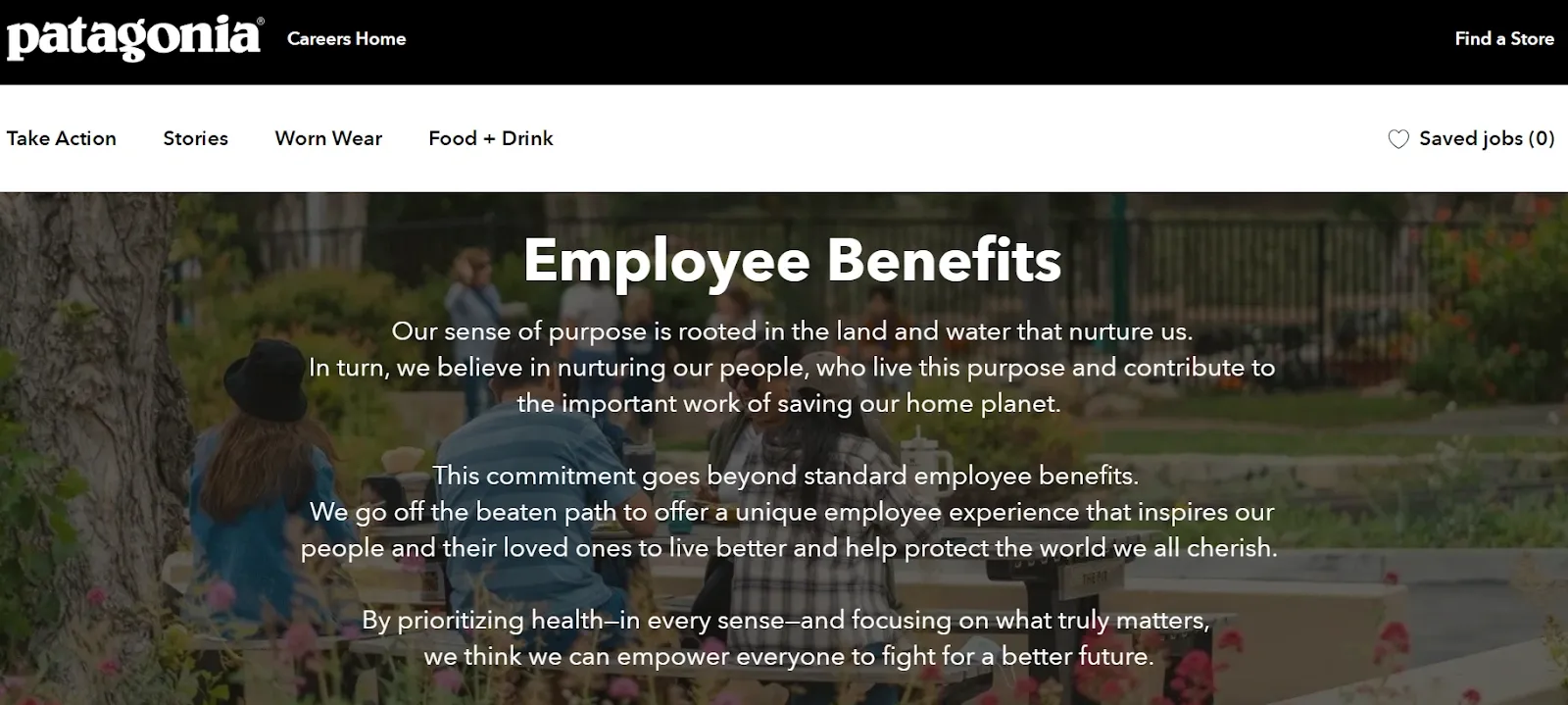
Up next, we have Patagonia’s wellness program. They have made it on the list due to their commitment to getting their employees into the great outdoors.
Offering outdoor seating spaces to enhance the office environment, this brand believes that fresh air is the answer.
Hosting on-site and off-site yoga sessions, mindfulness walks, and nature workshops, the sustainable brand aims to improve the work/life balance of every employee who spends their days sitting at the desk.
Empower your employee wellness programs with Empuls
Building a culture of wellness extends beyond offering programs — it’s about creating personalized, accessible experiences that employees genuinely enjoy using. That’s where Empuls comes in.
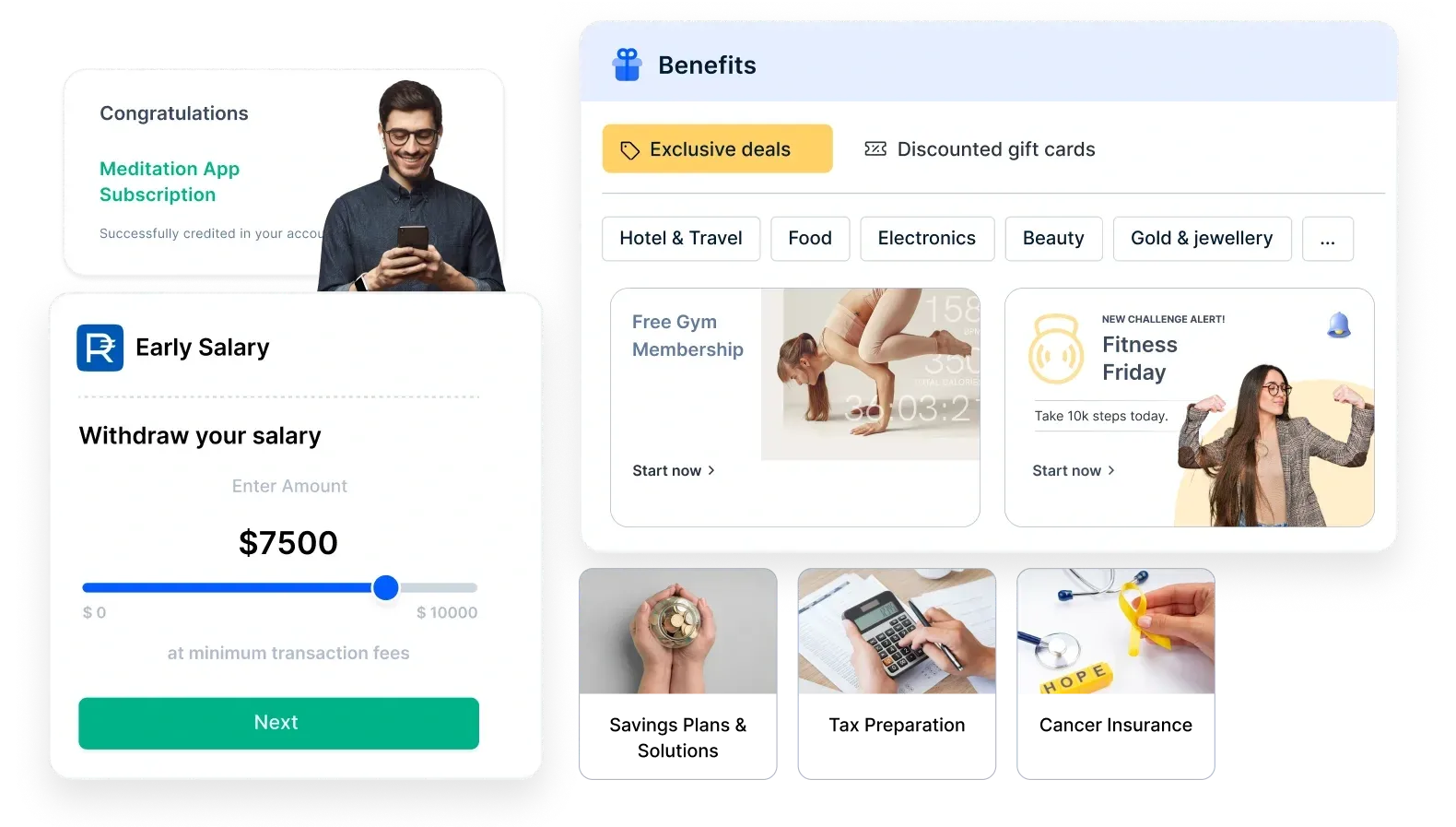
Empuls is an all-in-one employee perks and benefits platform that helps organizations design and deliver personalized wellness stipends, flexible benefits, rewards, and recognition programs — all in one place.
With Empuls, you can empower employees to choose the wellness activities that fit their lifestyle best, whether it’s gym memberships, mental health support, nutrition plans, mindfulness apps, or even volunteer opportunities.
Here’s how Empuls elevates your wellness initiatives:
- Flexible wellness stipends: Offer Lifestyle Spending Accounts (LSAs) so employees can choose fitness, therapy, wellness apps, and more.
- Wellness perks and benefits: Access thousands of global offers on health, nutrition, fitness, and mental well-being.
- Mental health support: Promote mental well-being with confidential access to support programs, and pulse surveys to track emotional wellness.
- Automation made easy: From distributing wellness stipends to celebrating achievements with rewards, Empuls handles everything seamlessly.
- Analytics and insights: Understand program impact with detailed participation and sentiment analytics, and optimize initiatives in real time.
Whether you're a startup building a wellness culture or a large enterprise scaling global programs, Empuls ensures every employee feels cared for, recognized, and motivated to bring their best self to work.
👉 Talk to an Empuls expert today to build a truly engaging wellness program!
Conclusion
Employee wellness programs are essential in today's high-stress work environments. Companies that invest in the health and well-being of their employees can reap numerous benefits, including increased productivity, reduced healthcare costs, and improved employee morale.
By prioritising employee wellness, organisations can create a happier, healthier, and more engaged workforce that is better equipped to meet the demands of today's business world.
FAQs
What are some unconventional ways to promote wellness in the workplace?
A Offering pet-friendly offices, providing on-site massages, and promoting meditation or yoga breaks are unique ways to encourage employee wellness.
How can employers encourage healthy eating habits among employees?
A Healthy cooking classes, hosting farmer's markets or healthy food trucks, and offering nutrition counselling can support healthy eating habits.
What are some ways to support employee financial wellness?
Offering financial planning workshops, providing retirement planning assistance, and offering flexible savings accounts can support employees' financial wellness.
How can employers promote environmental wellness in the workplace?
Providing eco-friendly office supplies, offering bike storage and showers for bike commuters, and organising company-wide clean-up events promote environmental wellness.
What are some creative ways to encourage employees to take breaks and rest?
Offering on-site nap pods, providing guided meditation sessions, and promoting outdoor breaks for fresh air and exercise can encourage employees to take breaks and prioritise rest.


















